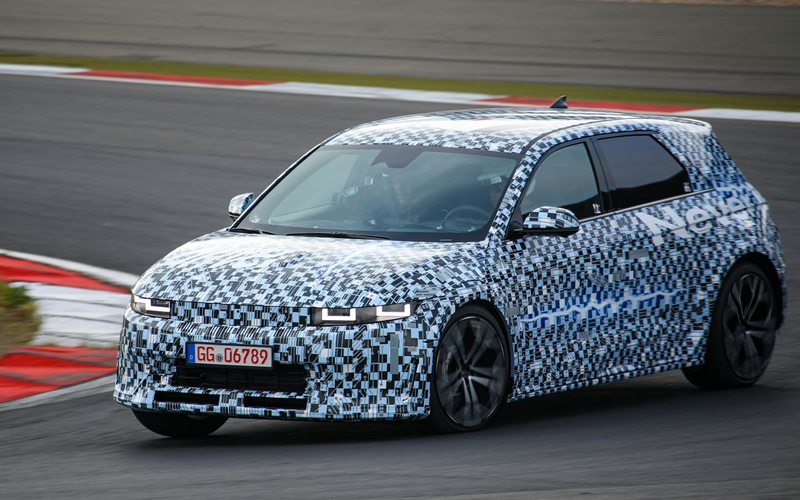
Creating an electric vehicle that replicates the sound and performance of a traditional gasoline-powered car may be the key to winning over automotive enthusiasts. Hyundai’s N performance-tuning division aims to address this challenge with their upcoming 2024 Ioniq 5 N.

During a test drive at the Nürburgring’s GP circuit, the Ioniq 5 N initially feels like any other high-performance electric vehicle, with its impressive acceleration and speed. However, Hyundai has implemented some unique features to enhance the experience. One of these features is the N Active Sound + system, which offers three sound profiles that emulate the noise of a combustion engine. The most engaging profile, called Ignition, accurately mimics the sound of a turbocharged 2.0-liter inline-four engine, fooling even discerning ears.
Furthermore, Hyundai introduces simulated gearshifts through the N e-Shift function. By briefly interrupting torque delivery, the Ioniq 5 N emulates the sensation of shifting gears in a traditional automatic transmission. This not only adds to the perception of speed but also provides a level of engagement that has been missing in electric vehicles.
The Ioniq 5 N is more than just a rebodied version of the Kia EV6 GT. It features additional strengthening points, specific bushing tolerances, and a focus on track performance. Hyundai has extensively tested the car on the Nürburgring Nordschleife, aiming for it to complete two laps with minimal performance degradation. To achieve this, the cooling package has been optimized, including improved air intake, radiator packaging, oil cooling, and a upgraded battery chiller.
The car offers various drive modes, including N Race for maximum performance and Endurance mode for extended track sessions. The Ioniq 5 N also includes features like torque distribution adjustment and advanced braking capabilities, although specific details are yet to be disclosed by Hyundai.

On the track, the Ioniq 5 N demonstrates impressive braking performance, responsive steering, and minimal body roll. The car feels grippy and agile, providing an exhilarating experience. On the road, when driven in a more relaxed manner, it exhibits comfortable cruising characteristics, with well-controlled adaptive dampers and excellent stability at high speeds.
While the production version of the Ioniq 5 N is still some time away, Hyundai’s efforts to replicate the sound and feel of a traditional internal-combustion engine in an electric vehicle are commendable. Whether these advancements will successfully appeal to enthusiasts remains to be seen, but they represent a step in the right direction towards bridging the gap between combustion and electric-powered driving experiences.


